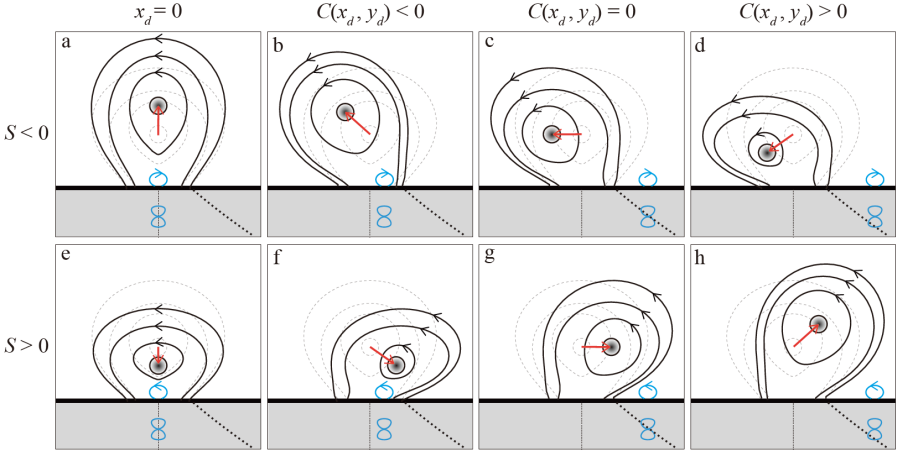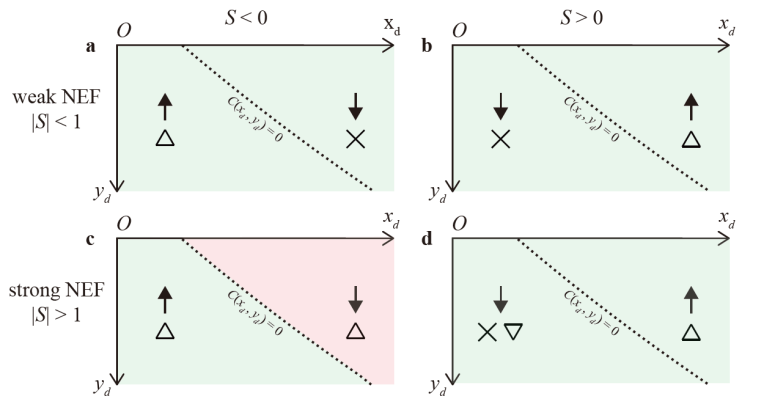A study published in The Astrophysical Journal Letters, authored by PhD candidate CHEN Yuhao, Prof. LIN Jun from Yunnan Observatories, Dr. SHEN Chengcai from the Center for Astrophysics | Harvard & Smithsonian, and their co-authors has introduced a newly defined "Filament Channel" function (C). This function provides a novel theoretical foundation for predicting solar eruptions by determining whether new emerging flux (NEF) can trigger the instability in solar filaments.
NEF is a crucial mechanism that triggers solar eruptions, but the specific processes by which it invokes the eruption remain poorly understood.
To investigate this, the researchers used a two-dimensional model to analyze the impact of the NEF’s polarity, position, and strength on the evolution in the coronal magnetic configuration that includes an electric current-carrying flux rope which is used to model the filament. The background magnetic field was produced by a dipolar magnetic source beneath the photosphere, and the NEF was represented by another dipole below the photosphere.
The researchers revealed the existence of a "Filament Channel" function (C) which classifies the region where NEF occurs into three zones: within the channel (C < 0), on the channel boundary (C = 0), and outside the channel (C > 0). The study showed the system’s evolutionary behaviors depend on the strength, position, and polarity of NEF, and these dependence can be described in a unified fashion.
Specifically, when C < 0 (indicating that NEF occurs within the channel), the flux rope moves upward as NEF has polarity different from that of the background field; if the polarities are the same, the flux rope moves downward. When C > 0 (indicating that NEF occurs outside the channel), the opposite occurs. When C = 0 (indicating that NEF occurs on the channel boundary), the flux rope moves horizontally.
This simple, but straightforward, criterion connects the filament’s early evolution and even the consequent catastrophic feature, to the NEF behaviors. It provides a unified criterion governed by the sign of C according to which one is able to tell at the very beginning how the system would evolve, whether the catastrophe could eventually occur, and even how the consequent coronal mass ejection (CME) would propagate.

Figure 1, the sign of the channel function indicates the evolution of the flux rope's equilibrium state during the onset of new flux emergence, predicts the occurrence of a catastrophe, and even forecasts the CME's motion direction after the event. Image by CHEN.

Figure 2, the FR motion during the early stage and the resulting catastrophes driven by NEF with varying polarities, strengths, and locations are depicted. Upward arrows represent the early ascent of the FR, while downward arrows indicate early descent. Triangles pointing upward and downward signify catastrophes followed by plausible eruptions and failed eruptions, respectively, while crosses denote cases without catastrophes. The green region indicates scenarios where early FR ascent or descent can lead to the presence or absence of CMEs, respectively, while the red region represents the opposite cases. The dotted lines correspond to C(xd, yd) = 0. Image by CHEN.
Contact:
CHEN Yuhao
Yunnan Observatories, CAS
E-mail: chenyuhao@ynao.ac.cn